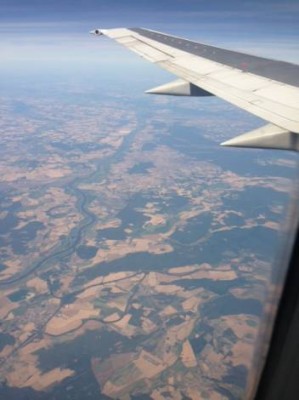GLOBAL. When I describe my own ancestral trip, people often ask “How can I do that?” They see the experience as potentially overwhelming with no clear beginning or end, yet it is not as hard as one may think. For all those wanting to gain a better understanding of their roots, the first and most key step is research.
Do your homework.
Find out last names of your family members. Ask your parents what their mothers’ maiden names were or towns the moved from. Names are what will make or break your search because they are cold hard facts to rely upon, even if the last name was tweaked a bit. Look around the attic for old birth certificates, on the back of photos for names, old yearbooks or anything that could lead you to an even earlier family member.
Take those facts elsewhere.
So you have garnered the names and hometowns. What to do next with this somewhat ancillary information?Now you have to do some more leg work; go to websites like ancestry.com or archives.com, sign up for a free trial and see what comes up when you put in birth dates, hometowns or names into the search engine. Also go onto ellisisland.org if you know your family came into the United States in the late 1800s up until the early 1930s. If you find information about the country you came from, do some old-fashioned Google searches for records for that specific country. Some country census records have been posted online or there is contact information for the archive centers you can call or email.
Dead end or on the cusp of a great discovery?
Do not be discouraged if suddenly you cannot go any farther back into your family tree. Reevaluate your facts.Double check records and see if you can research siblings of family members or if you missed a birth certificate or a move to another city in 1884. All of those could take you a new and more exciting tangent. Also with modern science and technology there have been vast advancements in genealogy as of late. Ancestry.com offers an incredible service where you can test your DNA with a home test kit, send it in and find out what nationalities you could be. This is a way to take some guess work and find out very simply if you are Native American, Dutch or Indonesian. The test costs $99, which some may find pricey, but a service that can tell you what you are and your heritage is priceless in my opinion.
Now what?
So you find all this great information and now you want to visit the countries or cities that your ancestors once called home? The next step is to plan a trip to these places, to visit monuments, towns or even streets that have some connection to you. Taking the planning one step at a time makes such a trip manageable and actually feasible. The next selection of the this series will begin to delve into the beginning stages of an ancestral trip: how to plan cheap ways to get from point A to point B, and other little helpful tidbits along the way. For now, just do your research and have fun looking at old photos and documents not only covered in layers of dust but also incredible and one-of-a-kind memories. Happy hunting!


